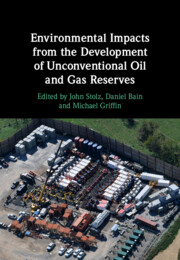191 results

Oliver Goldsmith in Context
- Coming soon
-
- Expected online publication date:
- August 2024
- Print publication:
- 31 August 2024
-
- Book
- Export citation
Diagnostic testing and antibiotic utilization among inpatients evaluated for coronavirus disease 2019 (COVID-19) pneumonia
-
- Journal:
- Infection Control & Hospital Epidemiology / Volume 45 / Issue 5 / May 2024
- Published online by Cambridge University Press:
- 28 December 2023, pp. 667-669
- Print publication:
- May 2024
-
- Article
- Export citation
47 Premorbid Intellectual Functioning and Not Education Predicts Memory Performance Virtual Environment Grocery Store
-
- Journal:
- Journal of the International Neuropsychological Society / Volume 29 / Issue s1 / November 2023
- Published online by Cambridge University Press:
- 21 December 2023, pp. 726-727
-
- Article
-
- You have access
- Export citation
13 Relationship Between Subjective Cognitive Decline and Episodic Memory Among Older Adults with and Without Neurocognitive Impairment
-
- Journal:
- Journal of the International Neuropsychological Society / Volume 29 / Issue s1 / November 2023
- Published online by Cambridge University Press:
- 21 December 2023, p. 697
-
- Article
-
- You have access
- Export citation
Pectoral angle: a glance at a traditional phenotypic trait in chickens from a new perspective
-
- Journal:
- The Journal of Agricultural Science / Volume 161 / Issue 4 / August 2023
- Published online by Cambridge University Press:
- 09 October 2023, pp. 606-615
-
- Article
-
- You have access
- Open access
- HTML
- Export citation
Figures
-
- Book:
- Environmental Impacts from the Development of Unconventional Oil and Gas Reserves
- Published online:
- 28 July 2022
- Print publication:
- 18 August 2022, pp ix-xx
-
- Chapter
- Export citation
Preface
-
- Book:
- Environmental Impacts from the Development of Unconventional Oil and Gas Reserves
- Published online:
- 28 July 2022
- Print publication:
- 18 August 2022, pp xxvii-xxx
-
- Chapter
- Export citation
Part I - Overview
-
- Book:
- Environmental Impacts from the Development of Unconventional Oil and Gas Reserves
- Published online:
- 28 July 2022
- Print publication:
- 18 August 2022, pp 1-102
-
- Chapter
- Export citation
Tables
-
- Book:
- Environmental Impacts from the Development of Unconventional Oil and Gas Reserves
- Published online:
- 28 July 2022
- Print publication:
- 18 August 2022, pp xxi-xxii
-
- Chapter
- Export citation
Index
-
- Book:
- Environmental Impacts from the Development of Unconventional Oil and Gas Reserves
- Published online:
- 28 July 2022
- Print publication:
- 18 August 2022, pp 411-420
-
- Chapter
- Export citation
Contributors
-
- Book:
- Environmental Impacts from the Development of Unconventional Oil and Gas Reserves
- Published online:
- 28 July 2022
- Print publication:
- 18 August 2022, pp xxiii-xxvi
-
- Chapter
- Export citation
Part III - Case Studies
-
- Book:
- Environmental Impacts from the Development of Unconventional Oil and Gas Reserves
- Published online:
- 28 July 2022
- Print publication:
- 18 August 2022, pp 311-410
-
- Chapter
- Export citation
Contents
-
- Book:
- Environmental Impacts from the Development of Unconventional Oil and Gas Reserves
- Published online:
- 28 July 2022
- Print publication:
- 18 August 2022, pp v-viii
-
- Chapter
- Export citation
Copyright page
-
- Book:
- Environmental Impacts from the Development of Unconventional Oil and Gas Reserves
- Published online:
- 28 July 2022
- Print publication:
- 18 August 2022, pp iv-iv
-
- Chapter
- Export citation
2 - Unconventional Shale Gas and Oil Extraction in the Appalachian Basin
- from Part I - Overview
-
-
- Book:
- Environmental Impacts from the Development of Unconventional Oil and Gas Reserves
- Published online:
- 28 July 2022
- Print publication:
- 18 August 2022, pp 19-43
-
- Chapter
- Export citation
1 - Global Unconventional Oil and Gas Reserves and Their Development
- from Part I - Overview
-
-
- Book:
- Environmental Impacts from the Development of Unconventional Oil and Gas Reserves
- Published online:
- 28 July 2022
- Print publication:
- 18 August 2022, pp 3-18
-
- Chapter
- Export citation
Part II - Environmental Analysis
-
- Book:
- Environmental Impacts from the Development of Unconventional Oil and Gas Reserves
- Published online:
- 28 July 2022
- Print publication:
- 18 August 2022, pp 103-310
-
- Chapter
- Export citation

Environmental Impacts from the Development of Unconventional Oil and Gas Reserves
-
- Published online:
- 28 July 2022
- Print publication:
- 18 August 2022
Deactivation study on zeolite materials using XPS and STEM characterization
-
- Journal:
- Microscopy and Microanalysis / Volume 28 / Issue S1 / August 2022
- Published online by Cambridge University Press:
- 22 July 2022, pp. 2472-2474
- Print publication:
- August 2022
-
- Article
-
- You have access
- Export citation
Multistate outbreak of Salmonella Mbandaka infections linked to sweetened puffed wheat cereal – United States, 2018
-
- Journal:
- Epidemiology & Infection / Volume 150 / 2022
- Published online by Cambridge University Press:
- 20 June 2022, e135
-
- Article
-
- You have access
- Open access
- HTML
- Export citation



